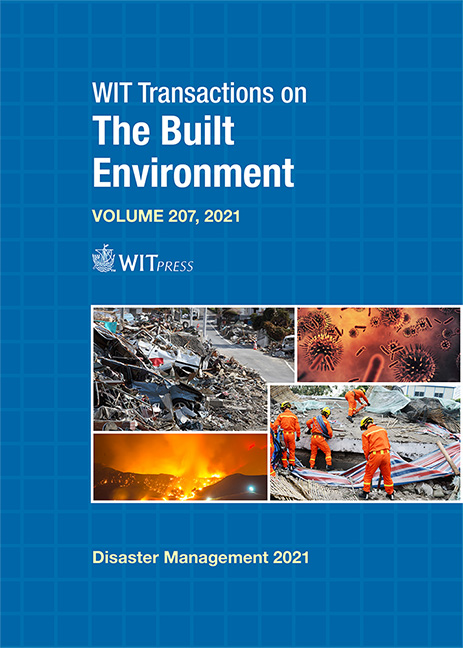WATER POLLUTION THREATENING MARINE, COASTAL AND ESTUARINE SYSTEMS: A REVIEW OF ENVIRONMENTAL-ECONOMIC APPROACHES FOR THE ASSESSMENT OF DEVELOPMENT STRATEGIES
Price
Free (open access)
Transaction
Volume
207
Pages
13
Page Range
135 - 147
Published
2022
Paper DOI
10.2495/DMAN210111
Copyright
Author(s)
MARIA I. BASTOS, PETER C. ROEBELING, FÁTIMA LOPES ALVES, SEBASTIAN VILLASANTE
Abstract
High-risk industrial pollution is one of the most harmful events threatening natural ecosystems. Water pollution abatement strategies (WPAS) – ranging from mitigation to adaptation strategies – are key to deal with these threats. While WPAS have to be adequately valued and assessed, environmentaleconomic (EE) reasoning – resorting mainly to three analytic tools, namely cost effectiveness analysis (CEA), cost–benefit analysis (CBA) and efficiency analysis (EA) – is critical for developing regional development strategies. This study reviews the state of knowledge on environmental-economic water pollution abatement studies, using a semi-systematic literature review approach. Results show, first, that economic analysis can support the sustainable planning and management of marine, coastal, estuarine and freshwater socio-ecological systems (MCEF-SES), effectively dealing with environmental pollution and push WPAS forward. Second, the most used EE approach within the context of MCEF-SES is CEA (34%), followed by CBA (19%), EA (19%), cost assessment (18%) and benefit assessment (10%). Third, until now EE research focused mostly on: (i) the gathering and examination of data; (ii) determining how to assess anthropogenic-induced ecosystem damages; (iii) assessing pollution damages; and (iv) performing CEA of diffuse-source/non-point source pollution. Fourth, even though some works have already been conducted on CBA and spatially explicit dynamic economic models, produced research still concentrates mostly on continuous/diffuse source pollution and oil spills. Out of these, EE scientific research remains sparse. Fifth, CBA is a useful tool to support EE decisions and to explore alternative WPAS, thus supporting better social assessments. Sixth, EA allows for the simultaneous analysis of multiple variables, dimensions and scenarios and is viewed as the most comprehensive of all EE analysis tools. However, most often its complexity limits its usage.
Keywords
coastal socio-ecological systems, water pollution, ecosystem impacts, environmental-economic approach, mitigation and adaptation strategies




